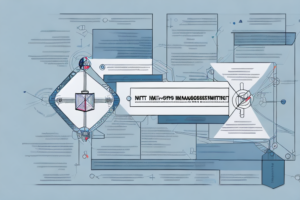What is information system contingency plan in RMF?
7 min read
A computer system with a shield or barrier around it to represent a contingency plan
In today’s digital world, information systems have become the backbone of daily operations for many organizations, regardless of size or industry. However, in the unfortunate event of a system failure or disaster, it becomes crucial to have a contingency plan in place. Information system contingency plans are designed to mitigate the negative effects of unexpected events, resulting in minimal downtime and the ability to recover quickly. This article will explore the importance of having an information system contingency plan in place, the Risk Management Framework (RMF), the process of creating an information system contingency plan, the key components of an effective contingency plan, developing a disaster recovery plan and testing and updating your information system contingency plan, common challenges in implementing an information system contingency plan, best practices for maintaining the security of your information system and how to integrate your information system contingency plan with overall business continuity planning.
The Importance of Having an Information System Contingency Plan
Having an information system contingency plan is essential for organizations in today’s interconnected digital world. Without proper contingency planning, the impact of a disaster can be catastrophic, resulting in significant financial losses, reputation damage, and potentially lead to the closure of the organization. A contingency plan is a proactive approach to minimize the impact of such events, providing peace of mind and the ability to respond quickly in the event of an emergency.
Moreover, having a contingency plan in place can also help organizations comply with regulatory requirements. Many industries, such as healthcare and finance, have strict regulations regarding data protection and disaster recovery. By having a well-documented contingency plan, organizations can demonstrate their compliance with these regulations and avoid potential legal consequences.
Understanding the Risk Management Framework (RMF)
The Risk Management Framework (RMF) is a Federal Information Security Management Act (FISMA) compliant process designed to provide a structured approach to managing risks in a structured manner. The RMF process consists of six distinct steps including:
- Categorize
- Select
- Implement
- Assess
- Authorize
- Monitor
Categorizing is the first step in RMF and involves defining the system; select is the second step which involves selecting the appropriate set of security controls; implement, assessment, authorization, and monitoring are the remaining steps. These steps are essential in the development and implementation of an effective contingency plan.
It is important to note that the RMF process is not a one-time event, but rather a continuous cycle of assessing and managing risks. This means that organizations must regularly review and update their security controls to ensure they are still effective in mitigating risks. Additionally, the RMF process can be tailored to fit the specific needs of an organization, allowing for flexibility in implementation.
The Process of Creating an Information System Contingency Plan
The process of creating an information system contingency plan involves six core steps, including:
- Identifying Critical Information Systems
- Conducting a Business Impact Analysis (BIA)
- Identifying Recovery Strategies
- Developing Response and Recovery Procedures
- Developing and implementing a test plan
- Maintaining the Plan
Each one of these steps plays a crucial role in developing a comprehensive contingency plan that enables organizations to recover quickly and effectively in the event of a disaster.
It is important to note that the process of creating an information system contingency plan is not a one-time event. As technology and business needs evolve, the plan must be updated and tested regularly to ensure its effectiveness. This requires ongoing collaboration between IT and business units to identify changes in critical systems, potential threats, and new recovery strategies.
Another key aspect of creating an effective contingency plan is ensuring that all stakeholders are aware of their roles and responsibilities in the event of a disaster. This includes not only IT staff but also business leaders, employees, and external partners. Regular training and communication are essential to ensure that everyone understands the plan and is prepared to execute it when necessary.
Key Components of an Effective Information System Contingency Plan
An effective contingency plan includes key components to ensure it can function as intended in the event of a disaster. These components include:
- Contingency Planning Policy
- Roles and Responsibilities
- Communications Plan
- Contingency Plan Activation
- Recovery Procedures
- Testing and Exercise Plans
- Maintenance Procedures
These components work in tandem to create a comprehensive plan that ensures the organization can take swift action in the event of an emergency.
It is important to note that an effective contingency plan should also include a thorough risk assessment. This assessment should identify potential threats and vulnerabilities to the organization’s information systems, as well as the likelihood and potential impact of each threat. By conducting a risk assessment, the organization can prioritize its contingency planning efforts and ensure that the plan addresses the most critical risks.
Developing a Disaster Recovery Plan for Your Information System
Developing a disaster recovery plan (DRP) is a vital component of an information system contingency plan. A DRP outlines how to recover critical systems and applications in the event of a disruption caused by a disaster scenario. This includes identifying critical system components, developing recovery strategies, establishing recovery teams, and arranging alternate facilities or workspaces. An up-to-date, thoroughly reviewed DRP ensures your organization can recover quickly and effectively following a disaster or system failure.
It is important to regularly test and update your DRP to ensure its effectiveness. This can involve conducting regular drills and simulations to identify any weaknesses or gaps in the plan. Additionally, as technology and business needs evolve, it is important to review and update the DRP to ensure it remains relevant and effective. By regularly testing and updating your DRP, you can ensure that your organization is prepared to handle any potential disasters or system failures.
Testing and Updating Your Information System Contingency Plan
Once a contingency plan has been created, it is essential to test and update regularly. This involves running tests and exercises to ensure the effectiveness of the plan. In doing so, the organization can identify potential weaknesses and areas for improvement, updating the plan accordingly. As systems and technologies evolve, it’s essential to review and update the plan to ensure it remains current and effective over time.
Regular testing of the contingency plan is crucial to ensure that it is effective in the event of a disaster. The testing process should involve all relevant stakeholders, including IT staff, business leaders, and external partners. It’s important to simulate different scenarios to identify any gaps in the plan and to ensure that all necessary procedures are in place. Once the testing is complete, any issues or weaknesses should be addressed, and the plan should be updated accordingly. By regularly testing and updating the contingency plan, organizations can minimize the impact of a disaster and ensure business continuity.
Common Challenges in Implementing an Information System Contingency Plan
Implementing an information system contingency plan can be a complex task, and there are common challenges that organizations face. These challenges include:
- Lack of Management Support
- Inadequate Funding
- Confusion Among Key Personnel
- Lack of Personnel Training
- Changing Technology
- Integration with Other Business Processes
Anticipating these challenges and developing a strategy to overcome them can ensure the successful development, implementation, and maintenance of your information system contingency plan.
One of the major challenges in implementing an information system contingency plan is the lack of understanding among employees about the importance of such a plan. Many employees may not realize the potential risks and consequences of a system failure, and therefore may not prioritize the development and implementation of a contingency plan.
Another challenge is the difficulty in keeping the contingency plan up-to-date with the latest technology and business processes. As technology and business practices evolve, the contingency plan must also be updated to ensure that it remains effective in addressing potential system failures.
Best Practices for Maintaining the Security of Your Information System During a Crisis
During a crisis, it’s essential to maintain the security of your information system. Best practices for doing so include:
- Maintaining backups of important data and information
- Maintaining secure offsite backups
- Testing backups to ensure they are functioning correctly
- Implementing multi-factor authentication
- Limiting access to sensitive information
- Monitoring network activity for anomalous behavior
By implementing these best practices, organizations can increase the security of their information systems and reduce the risk of breaches and unauthorized access.
How to Integrate Your Information System Contingency Plan with Overall Business Continuity Planning
An information system contingency plan should be an integral part of overall business continuity planning. By integrating the two, organizations can ensure that all necessary plans and strategies are aligned effectively. This minimizes gaps in planning, improves communication and collaboration among departments, and ensures that the organization is well-prepared to navigate unexpected events.
Conclusion
An information system contingency plan is a crucial component of any organization’s risk management strategy. By developing a comprehensive plan and following best practices, organizations can minimize the impact of unexpected events, reduce system downtime, and recover quickly. While the development and implementation of a contingency plan can be complex, the benefits of doing so far outweigh the challenges.



